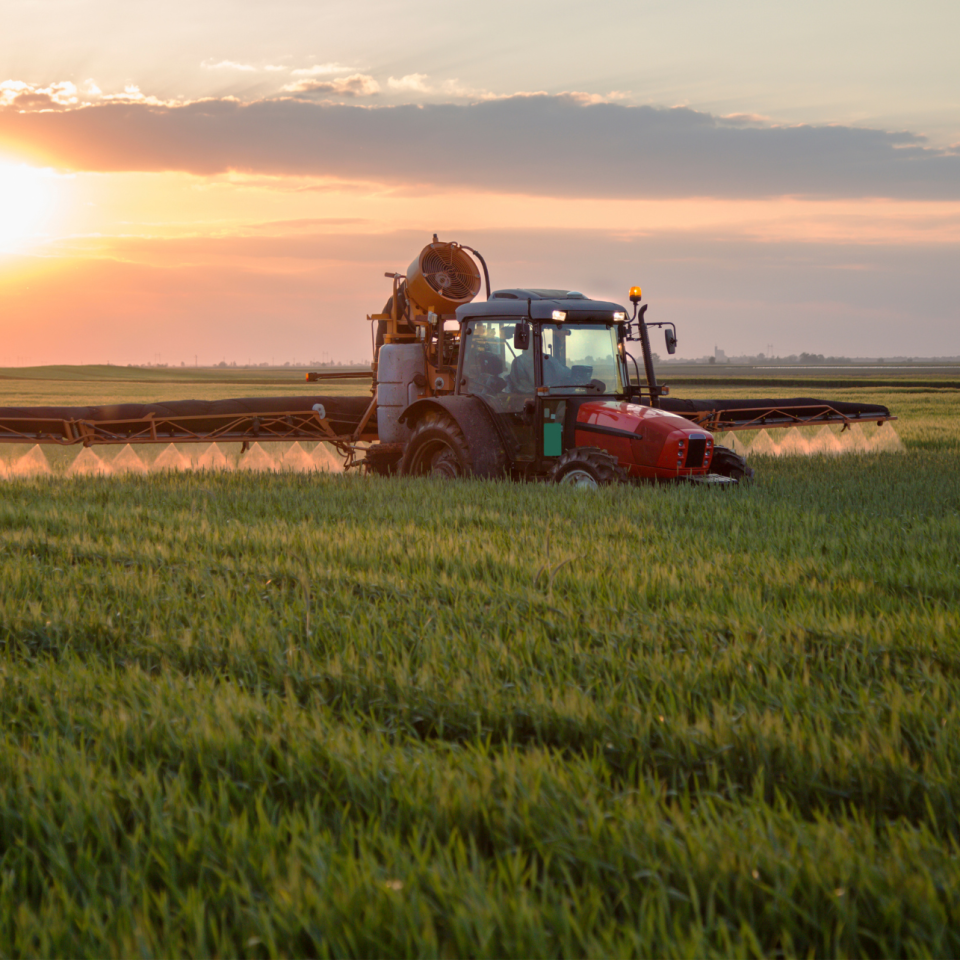
As a seasoned grower, you understand that early-season pests can pose significant threats to crop health and yield potential. While pest pressure can vary each year, early-season pests like cutworms, flea beetles, and seedcorn maggots are particularly prevalent and can cause substantial damage to emerging crops in Ontario. By recognizing and addressing these threats early, you can protect your crops and maximize your yields.
Common Early-Season Pests in Ontario
- Cutworms:
Cutworms are one of the most destructive early-season pests for crops like corn and soybeans. These larvae, which are typically active at night, feed on the stems of young seedlings and can sever them completely from the soil. This damage often results in significant plant loss. In Ontario, there are several species of cutworms, including black cutworm and dingy cutworm, both of which are notorious for attacking crops during the early stages of growth. - Flea Beetles:
Flea beetles are especially problematic for soybeans and canola crops. These small, jumping insects create numerous tiny holes in the leaves, leading to defoliation. In soybeans, flea beetles are most damaging during the early growth stages when the plants are tender and more susceptible to injury. Severe defoliation can stunt plant growth, hinder photosynthesis, and delay crop establishment, ultimately reducing yield potential. - Seedcorn Maggots:
Seedcorn maggots are another significant pest that affects crops like corn, soybeans, and other small-seeded plants. The larvae feed on seeds or young seedlings in the soil, which can lead to poor germination or plant death. Seedcorn maggots are particularly problematic in cool, wet soils—conditions that are common in Ontario during early spring. Fields with high organic matter content, such as those following a cover crop or high residue crop, are especially vulnerable to seedcorn maggot damage. - Corn Rootworms (Early-Season Threats):
While typically more of a threat later in the season, corn rootworms can also be active early in the spring. These pests lay eggs in the soil the previous summer, and their larvae begin feeding on corn roots once the crop emerges. Early management, including crop rotation and the use of insecticide seed treatments, can help mitigate their impact before they cause significant damage. - Slugs: Not always thought of as a crop limiting pest, slugs are capable of feeding on leaf tissue throughout the growing season, slowing early growth. Crop rotation and residue management can help decrease the damage from slugs.
Why Early Pest Management Matters
Pests like cutworms, flea beetles, and seedcorn maggots are particularly damaging in the early stages of crop development. Addressing pest issues early in the growing season helps:
- Protect Seedlings: Young plants are more vulnerable to pest damage. Early intervention ensures they can establish strong roots and stems, reducing the risk of crop failure.
- Minimize Yield Loss: Pests that attack crops early can cause significant damage, leading to reduced plant vigor, delayed growth, and lower overall yields. By managing pest populations early, you can prevent this loss.
- Cost-Effective Solutions: Early control is generally more cost-effective than dealing with larger infestations later in the season. Effective management strategies can help reduce the need for broad-spectrum insecticides and limit pest damage.
Best Practices for Early Pest Management
- Scouting:
Regular scouting is one of the most important steps in pest management. Walk your fields early and often to look for signs of pest damage or pest activity. Look for holes in leaves, cut seedlings, or any signs of larvae or adults that indicate a potential problem. Early detection allows for more targeted and effective interventions. - Insecticide Seed Treatments:
For corn and soybeans, consider using insecticide-treated seeds. These treatments offer protection against pests like cutworms, flea beetles, and seedcorn maggots. Seed treatments provide a barrier of protection during the most vulnerable early growth stages, helping to prevent damage before it starts. - Soil-Applied Insecticides:
For persistent pests like seedcorn maggots and rootworms, soil-applied insecticides can offer long-lasting protection. These products create a protective zone around the seedling’s roots, ensuring that pests are kept at bay during the critical early weeks of growth. - Crop Rotation:
Crop rotation is a highly effective strategy for managing pest populations. Rotating crops each season helps break pest life cycles and prevents pest build-up in the soil. For example, alternating between corn, soybeans, and other crops like wheat or alfalfa can help disrupt the habitat for pests like rootworms and cutworms. - Cover Crops and Tillage:
Incorporating cover crops into your rotation can help reduce pest pressure by outcompeting weeds and providing habitat for beneficial insects that can naturally control pests. Additionally, proper tillage practices can help reduce the survival of pests like seedcorn maggots by burying eggs and larvae in the soil.
Proactive Pest Management for Optimal Yields
By staying ahead of early-season pests, you can protect your crops from the damage that can occur during the critical early stages of growth. Proactive scouting, using insecticide seed treatments, and employing a well-thought-out pest management plan will ensure your crops get off to the best start possible. Effective pest control early in the season prevents yield loss, reduces the need for costly interventions later on, and ultimately supports a more successful, productive growing season.
By continuing to monitor your fields closely and adapting to the pest pressures of the season, you’ll be well-positioned for success. Early pest management is key to achieving strong, healthy crops and maximizing your yield potential at harvest.